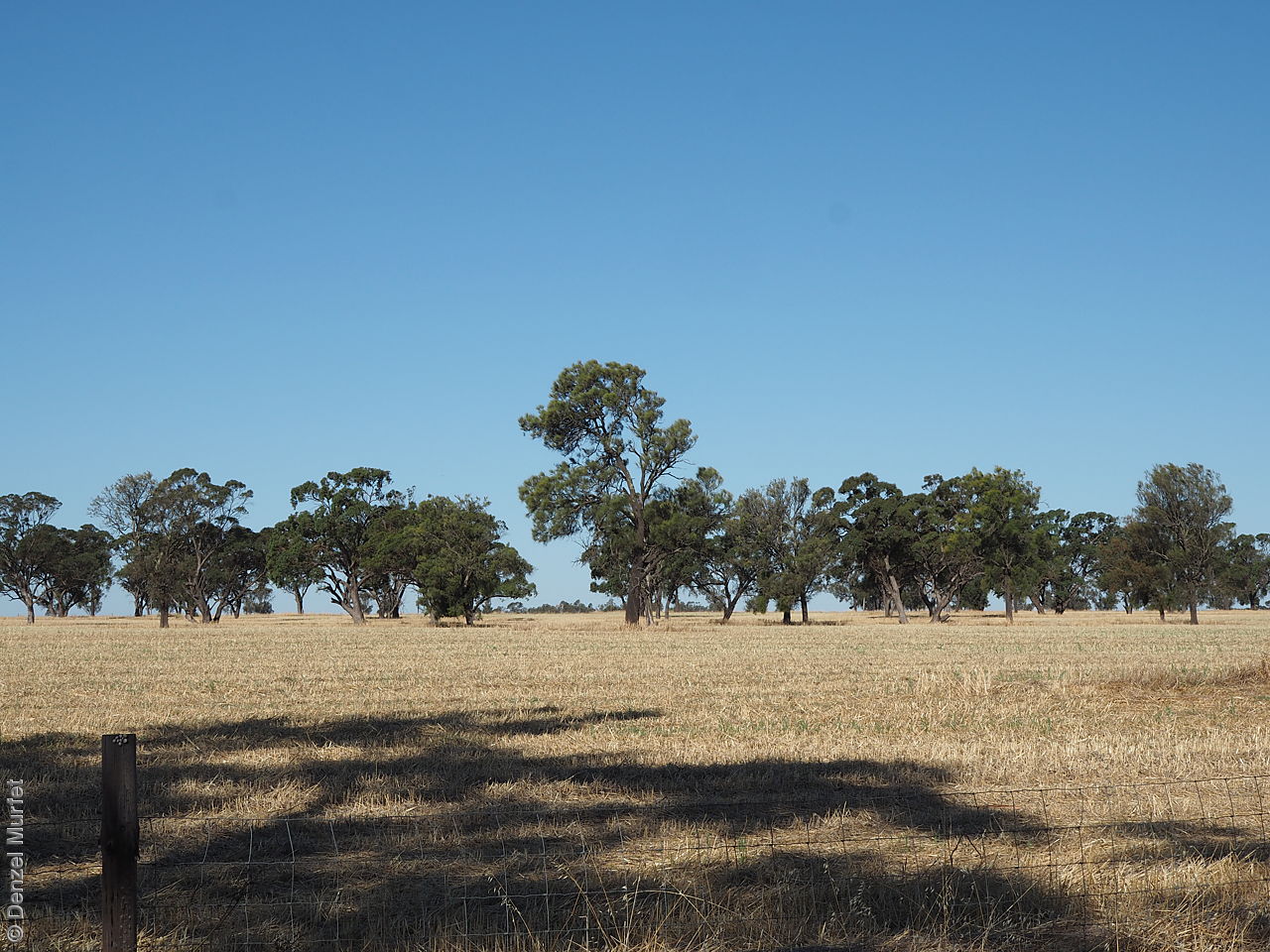
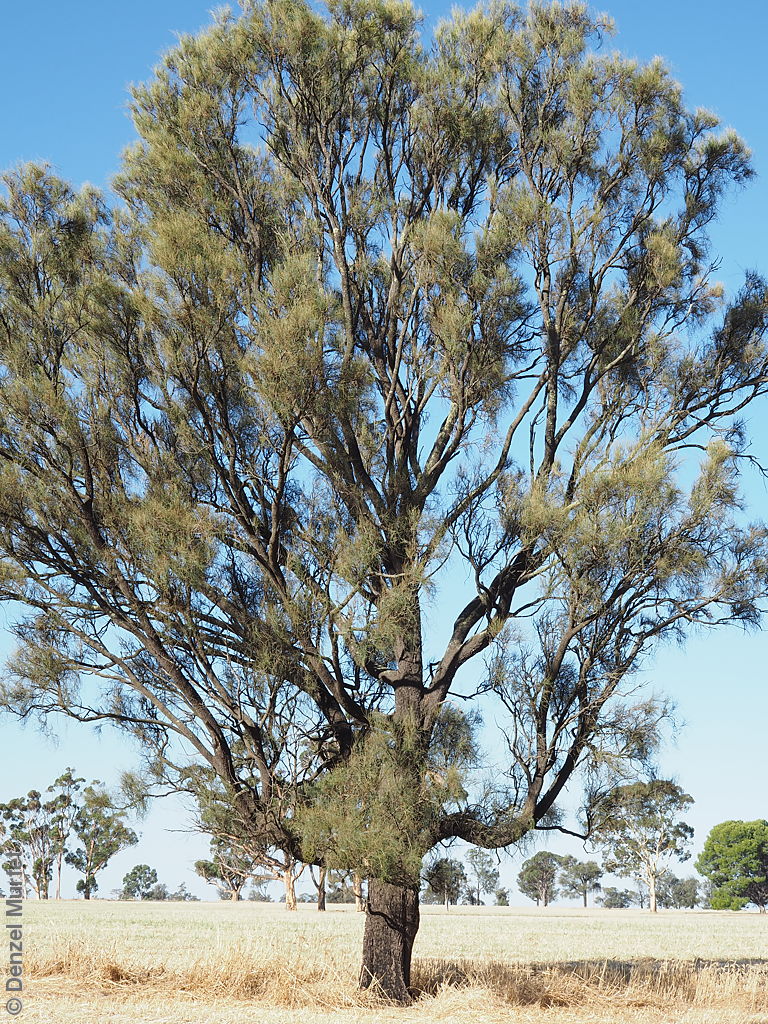
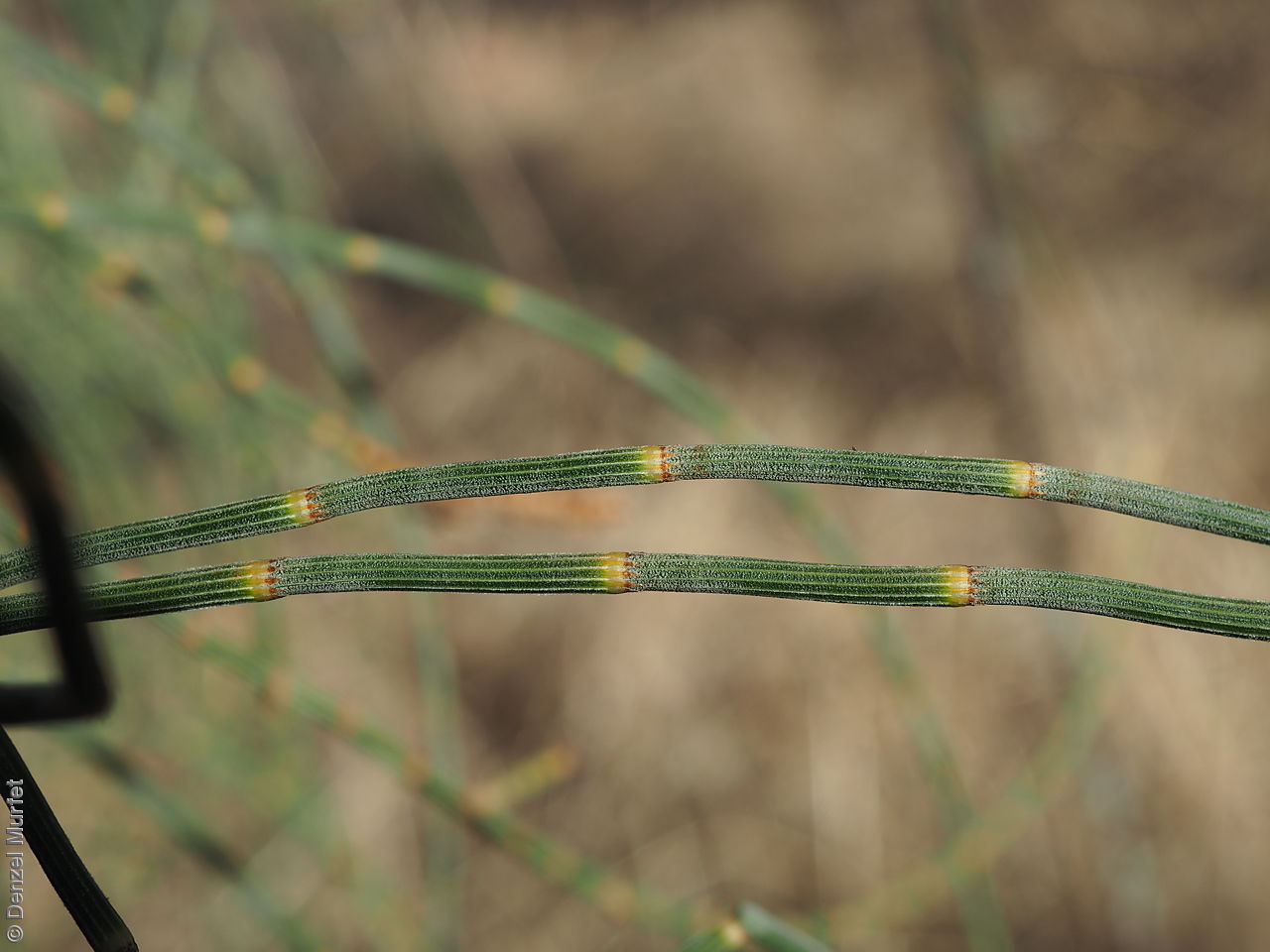

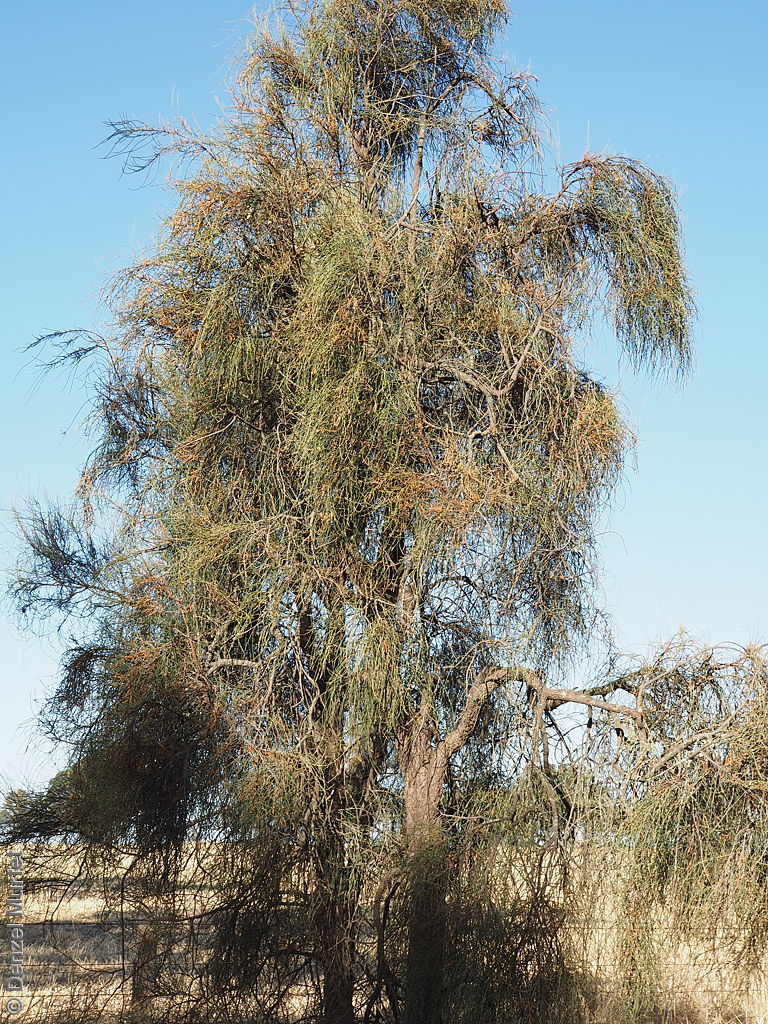
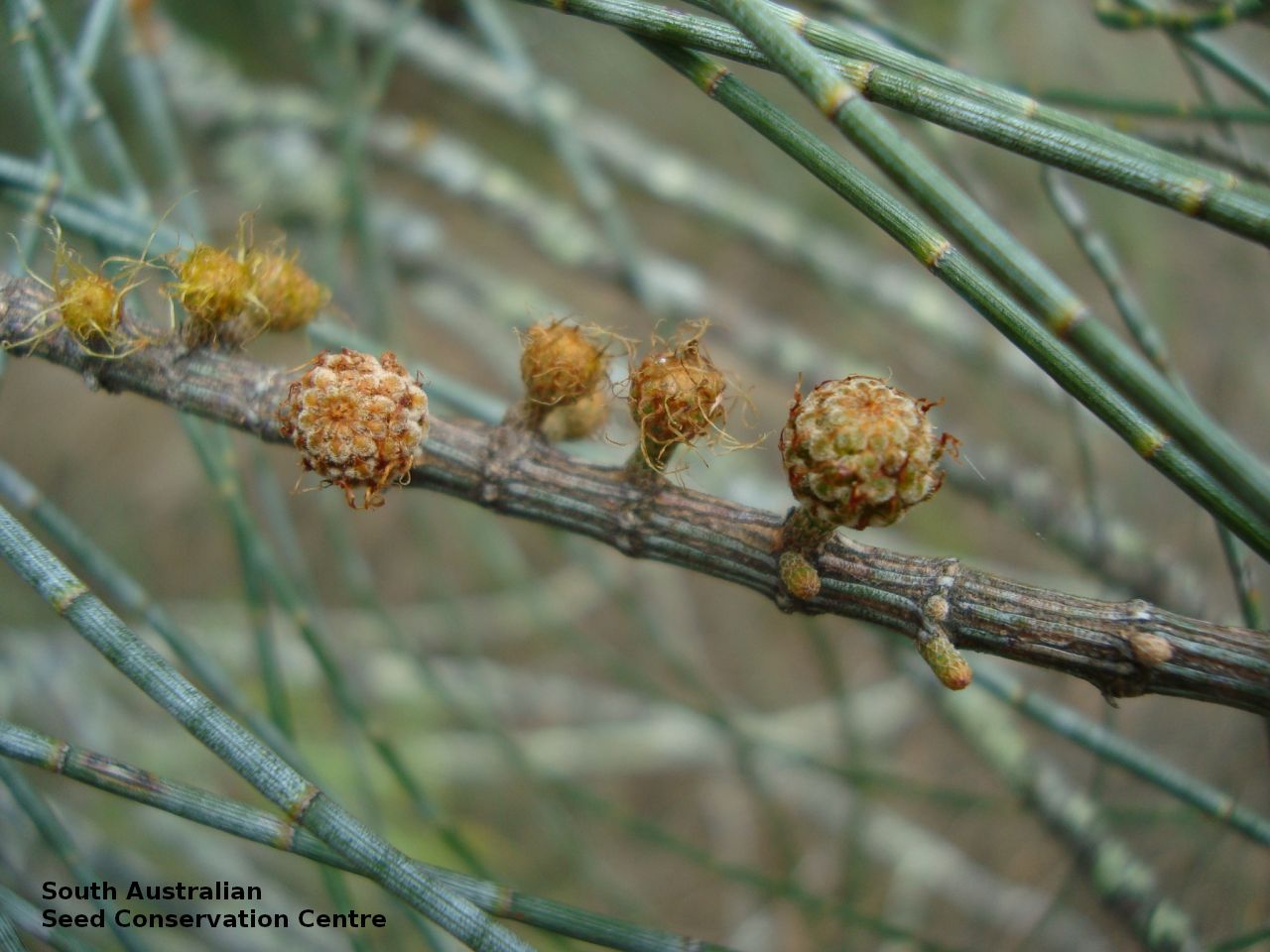
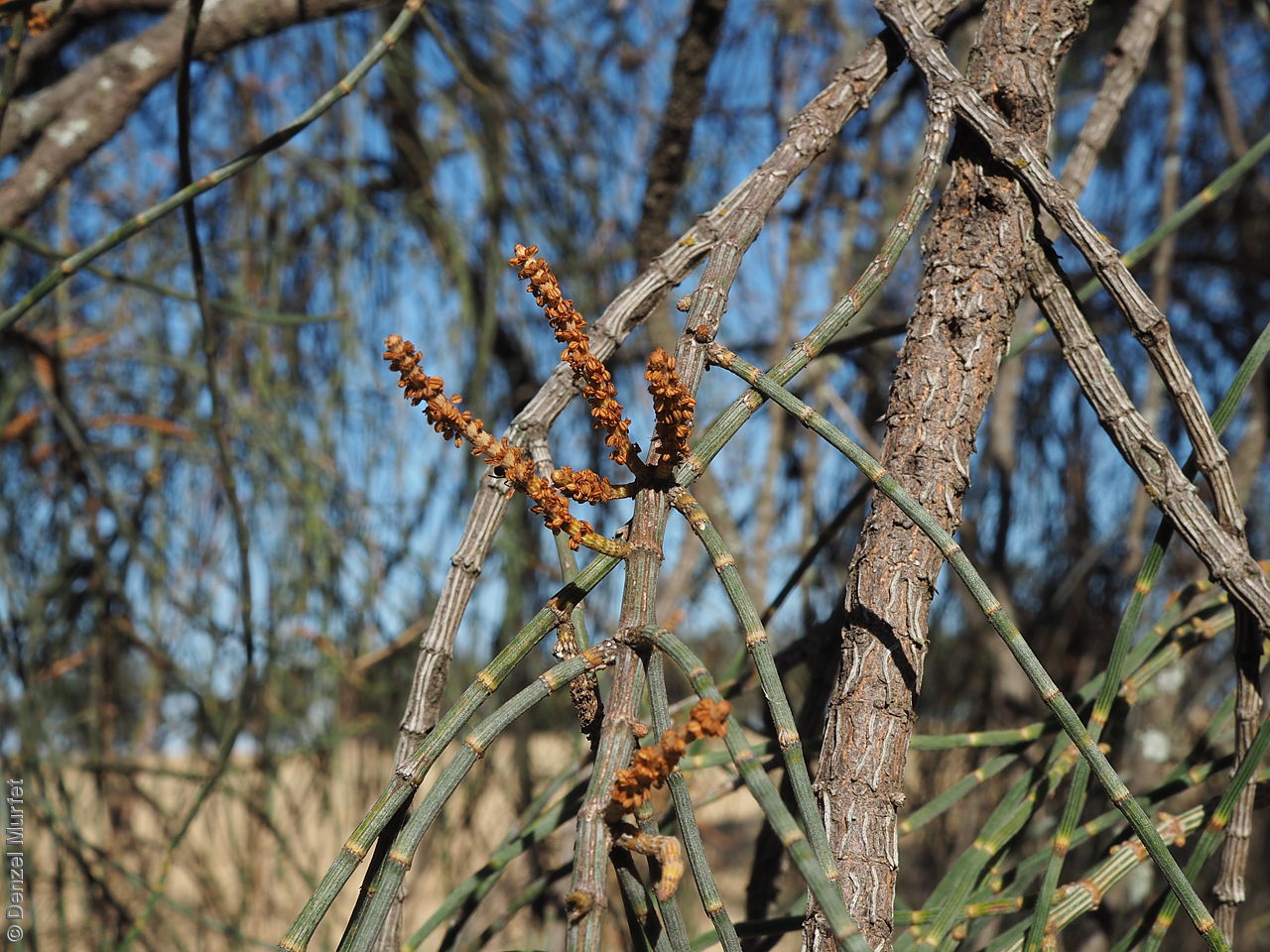

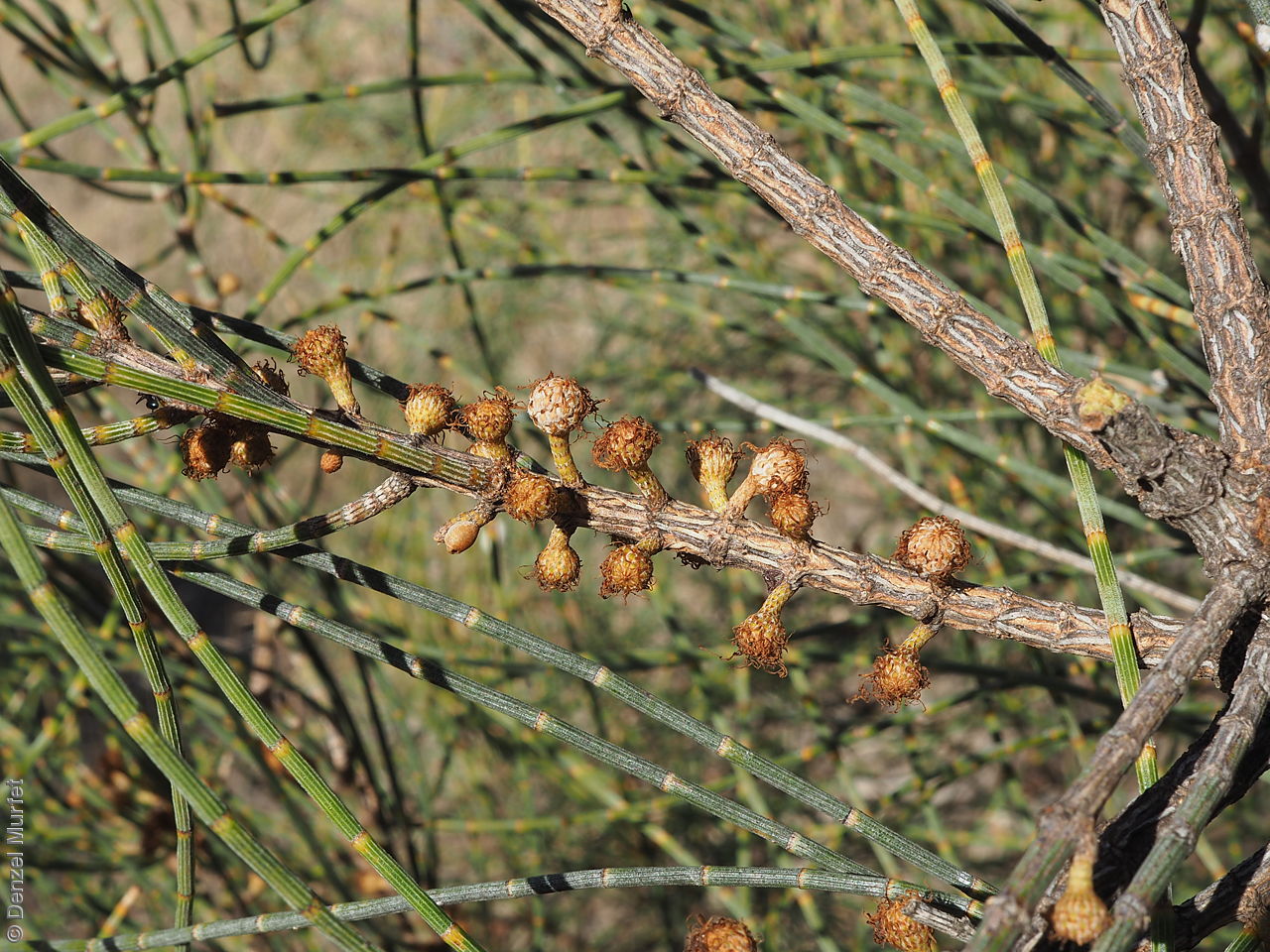
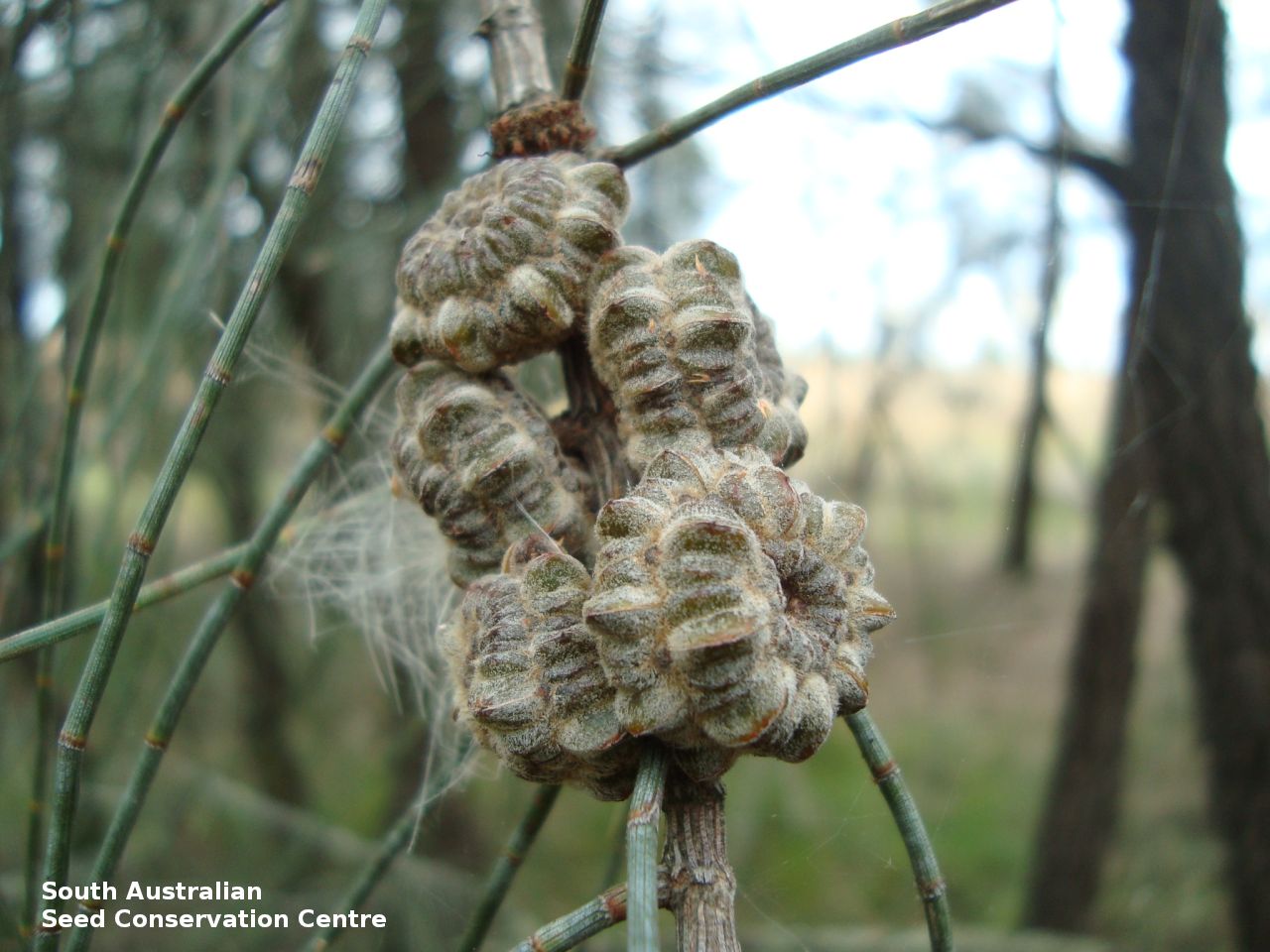
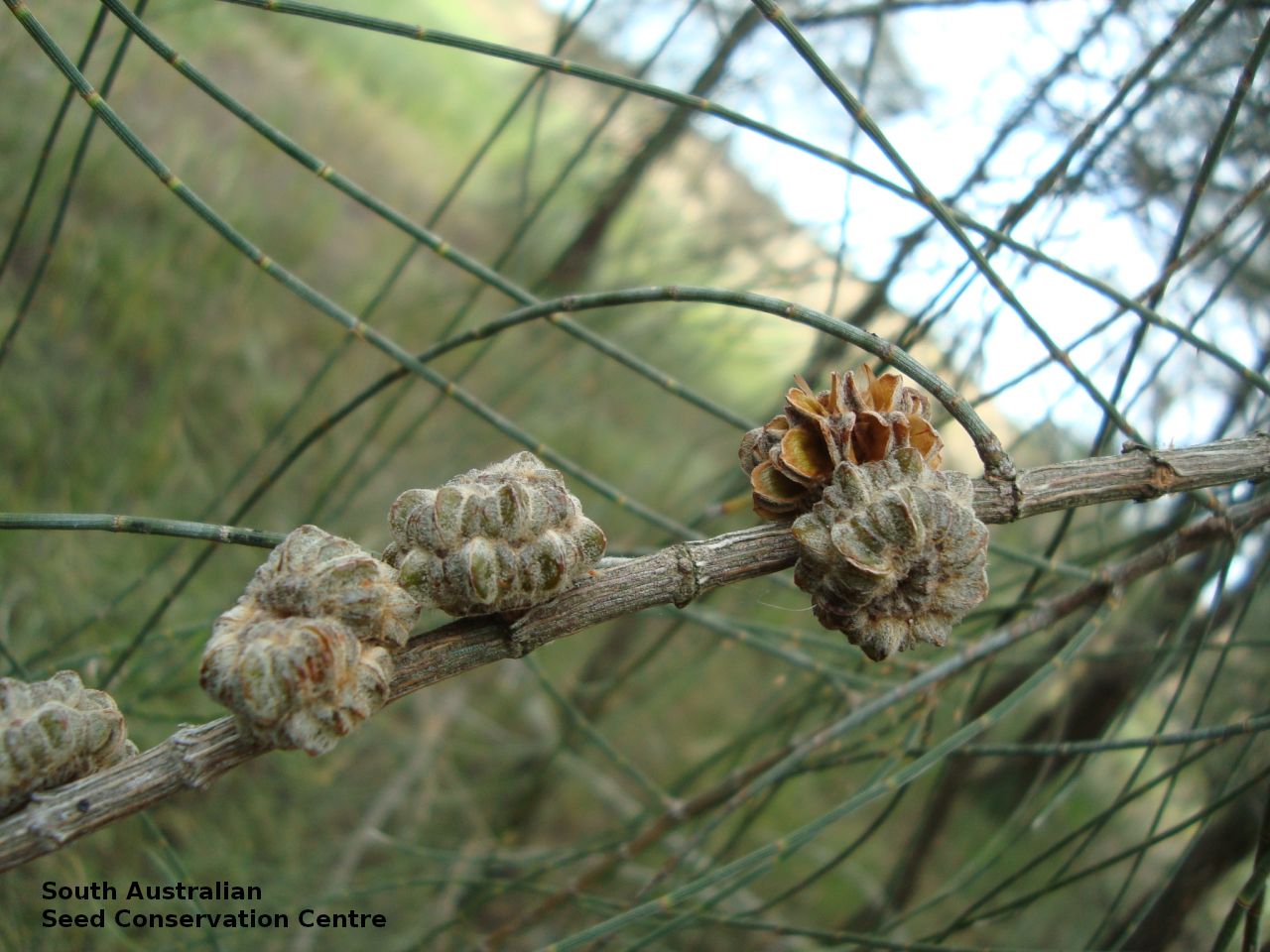

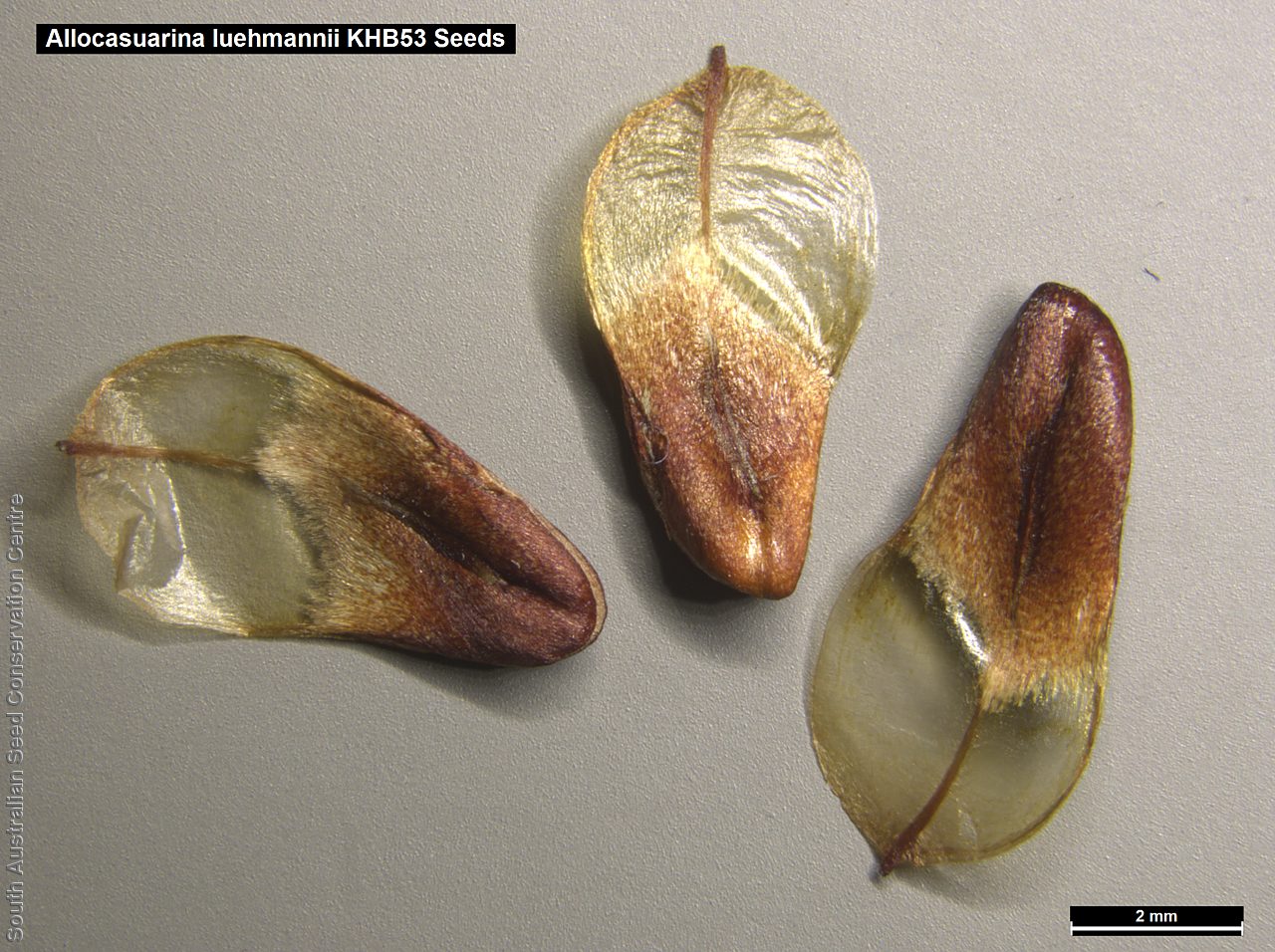


Botanical art
Prior names
Casuarina luehmannii
Common names
Buloke
Bull Oak
Etymology
Allocasuarina from the Greek 'allos' meaning other or different, indicating the relationship with the genus Casuarina (first used by Rumphius (1743), in allusion to the supposed resemblance of the "foliage" of Casuarina equisetifolia to the plumage of the Cassowary, which is from the Malay 'kesuari', later being latinised as Casuarius). Luehmannii named after Johann Georg Luehmann (1843–1904), a German botanist who worked at the National Herbarium, Royal Botanical Gardens, Melbourne for more than 30 years and was Assistant Botanist to Ferdinand von Mueller, who was then the Director of the Gardens.
Distribution and status
Found in upper South-east in South Australia, growing in heavy clay soils. Also found in Queensland, New South Wales and Victoria. Native. Common in South Australia. Common in the other states. As a plant community dominated by A. luehmannii it is considered very rare across its range.
Herbarium regions: Murray, South Eastern
AVH map: SA distribution map (external link)
Plant description
Dioecious tree to 15 m high, with ascending glaucescent branchlets. Articles (stem segments) terete, striate, smooth, to 18 mm long and 2 mm diameter with a central rounded ridge and 10-13 teeth (reduced leaves) around the end. Separate male and female flowers appearing between September to November. Fruits are short woody cone with only 2-3 rows of valves. Seed embryo type is investing.
Seed collection and propagation
Collect seeds between December and February. This species does not hold onto its fruits like other Allocasuarina species. Collected fruits that are fat, hard and slightly brown. Place cones in a tray and leave to dry for 2-3 weeks. This will allow the valves to dry and open releasing the seeds. Place the dried cones in a bucket and shake gently to dislodge the seeds. Use a sieve to separate seeds from the unwanted material. Store the seeds with a desiccant such as dried silica beads or dry rice, in an air tight container in a cool and dry place. From one collection, the seed viability was average, at 60%. Seeds are non-dormant, viable seed should germinate readily.
| Location | No. of seeds (weight grams) | Number of plants | Date collected | Collection number Collection location | Date stored | % Viability | Storage temperature |
|---|---|---|---|---|---|---|---|
| BGA MSB | 12,000 (32.45 g) 12,000 (32.45 g) | 50 | 13-Feb-2006 | KHB53 South Eastern | 28-Jul-2006 | 60% | -18°C |
Number of plants: This is the number of plants from which the seeds were collected.
Collection location: The Herbarium of South Australia's region name.
% Viability: Percentage of filled healthy seeds determined by a cut test or x-ray.